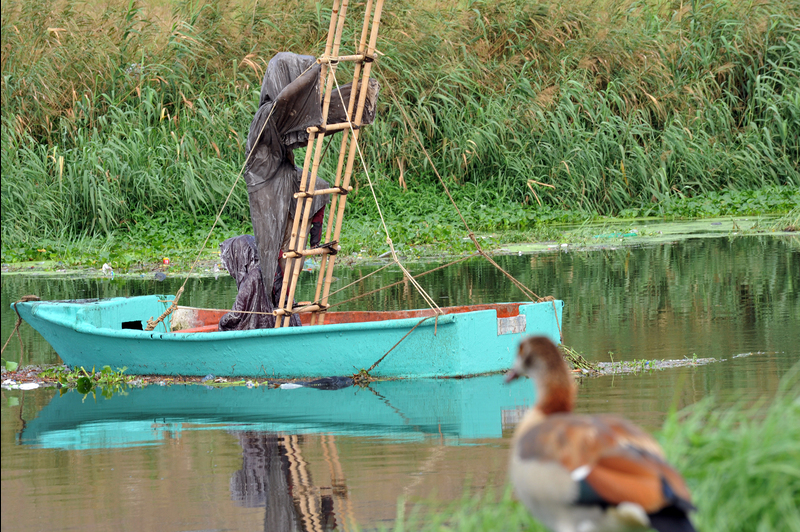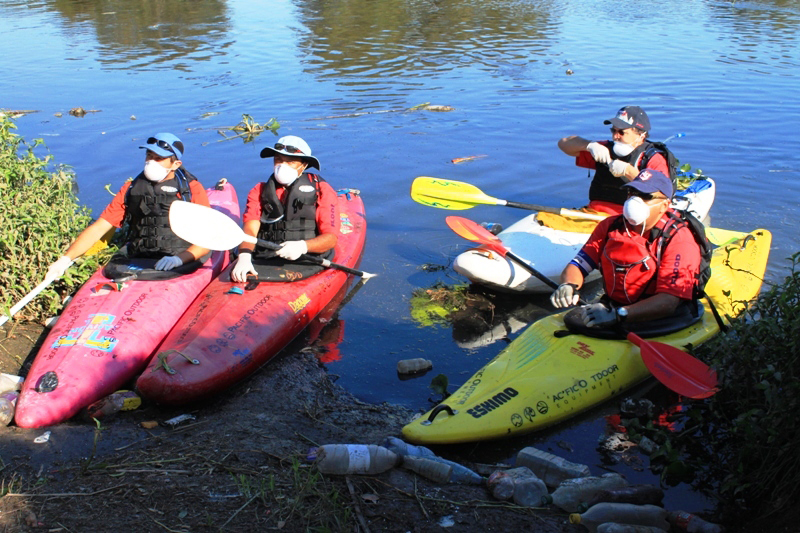Water Week: New life for urban waterway
11 March 2013
UCT commuters using the M5 will no doubt have noticed the interesting piece of urban art on the Black River, near the Raapenberg Exchange.
Though the Grim Reaper, thought to represent Charon the ferryman from Greek mythology, is no longer afloat in his boat (the piece has disappeared), the piece highlighted the state of the waterway, says UCT's Dr Kevin Winter of the Department of Environmental & Geographical Science, who says that with careful management, life can return to badly polluted urban waterways.
Ironically, the polluted Black River is already showing a return from the dead, with flamingos recently returning to the river's dark waters. "The improvement has been remarkable," says Winter.
The UCT researcher took fourth-year students to the site alongside the Grim Reaper's boat soon after it was erected and asked them to decide whether the art form was helpful to urban rivers or whether it should be cut loose.
"They made some excellent suggestions, and agreed that it should stay, and that we could use it to draw attention to the river," Winter said.

Over the past 18 months, thanks largely to improvements in the Athlone Waste Water Treatment Works and to the Kadar Asmal Project, in which teams of workers have removed tons of litter and alien weeds from the river, the water quality in the river has improved rapidly.
"Although still polluted, it is not a river of death," said Winter. "What we are seeing is the slow rebirth of a badly degraded urban river. Flocks of flamingos and other wetland bird species are choosing to roost in the river. The sight is spectacular, with birds feeding from the river bed because the water is clear and largely free of the canopy of weeds that once infested it".
 This work is licensed under a Creative Commons Attribution-NoDerivatives 4.0 International License.
This work is licensed under a Creative Commons Attribution-NoDerivatives 4.0 International License.
Please view the republishing articles page for more information.
Research and innovation
News
Student Life
Front page extra
Previous Editions










